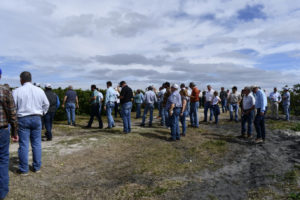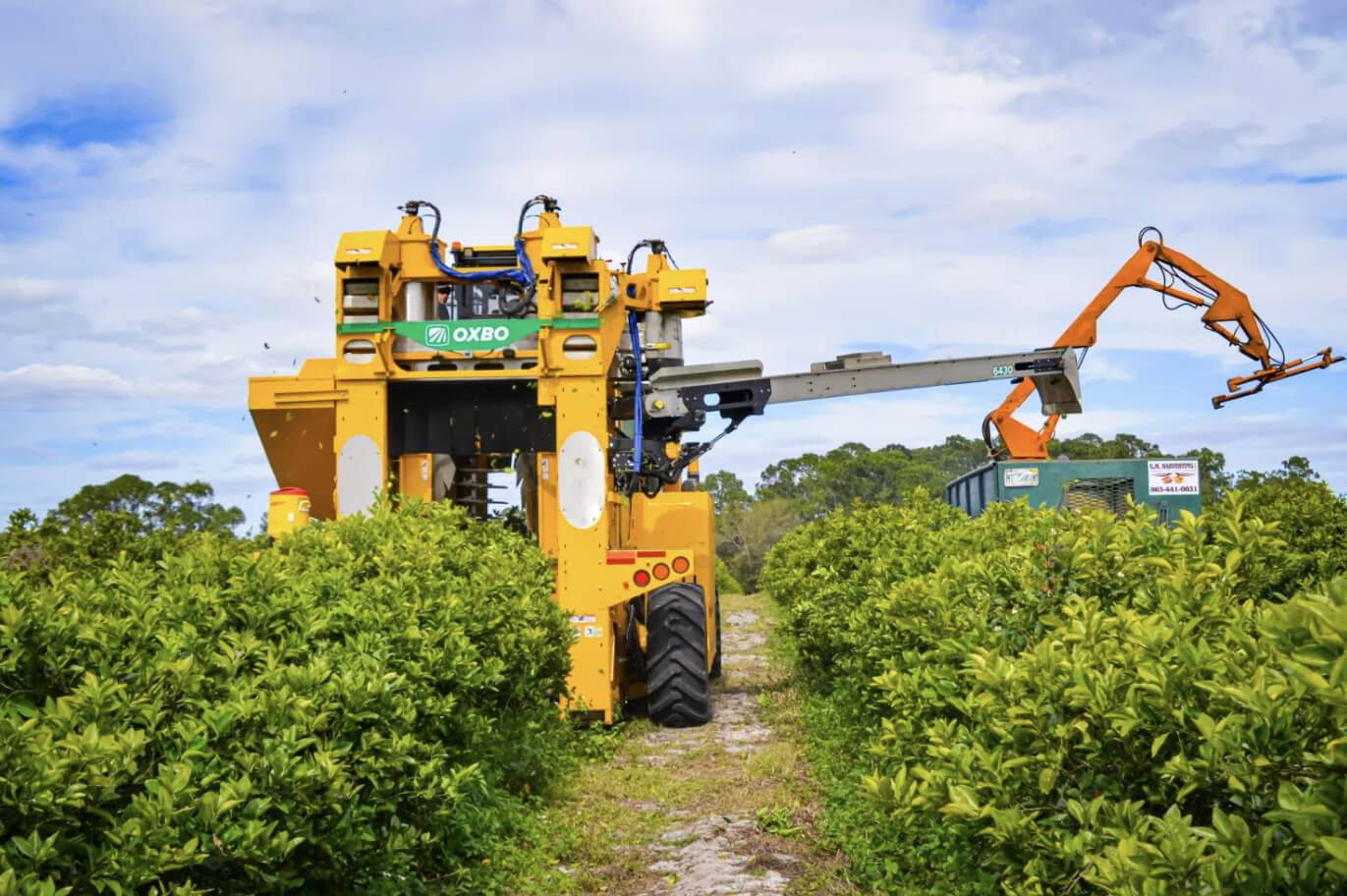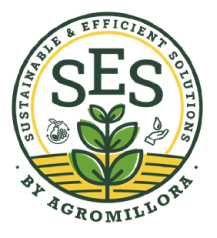The recent field day showcased how technology might help citrus growers with two of their biggest challenges: sourcing labor and fighting HLB
The event was held at Lost Lake Groves in Lake Placid, Florida, and featured machine harvest of citrus trees in an experimental super-high-density grove. The grove has 908 trees per acre and has been topped and hedged following the Pedestrian Hedge Model.
The 14-acre grove was planted in 2018 and has been trained from the start for machine harvest. The trees currently range from about 7-feet to 8-feet tall with about 3-foot width. They are expected to top out at 10 feet.
The experiment aims to test the viability of machine harvest in citrus, which could provide a solution to the labor problem. Two people can operate the machine. This season was the first commercial harvest of the grove, and attendees of the field day were able to observe machine harvest in action. Last season, commercial harvest was derailed by hurricanes and freezes. An over-the-row Oxbo 6430 was utilized and on display at the event.

The field day was well attended by growers, academics and other stakeholders who were curious to see the technology in operation. The machine moves through the grove at about 2 miles per hour. Examination of trees that had been mechanically harvested showed most fruit had been picked. There was some damage to small limbs, but the training of trees is meant to limit that damage.
Clay Pederson, managing director of Agromillora Florida, says the pick out is about 95% to 97% using the machine. Agromillora hosted the event. The company’s SmartTree was planted in the grove.
Pederson noted that another benefit observed in the grove is trees seem to be withstanding HLB better than trees in conventional plantings. This might be due to the robust root systems the trees establish in such densities. With only one harvest completed, there is still more proof of concept needed to determine the viability of this approach. Horace Durrance, grove co-owner and manager, said he’s pushed a lot of trees in the past few years. He’d like to replant following this approach, but still needs a little more validation of its long-term sustainability.



